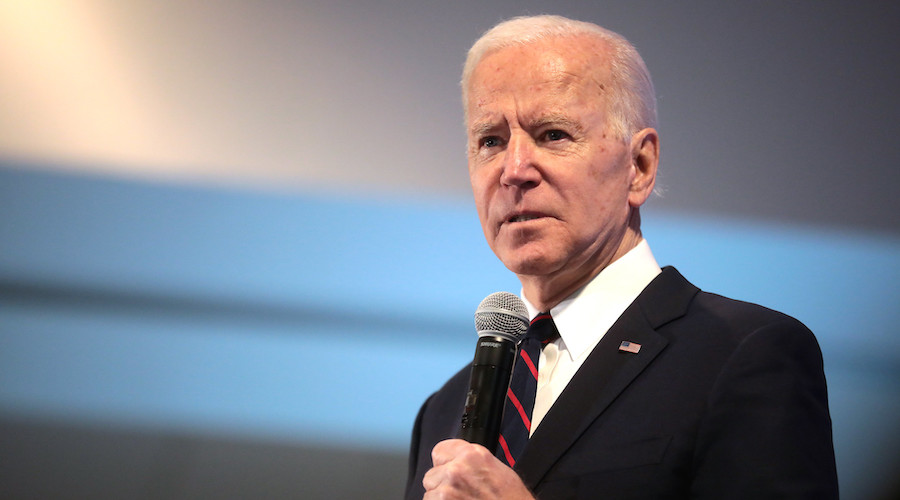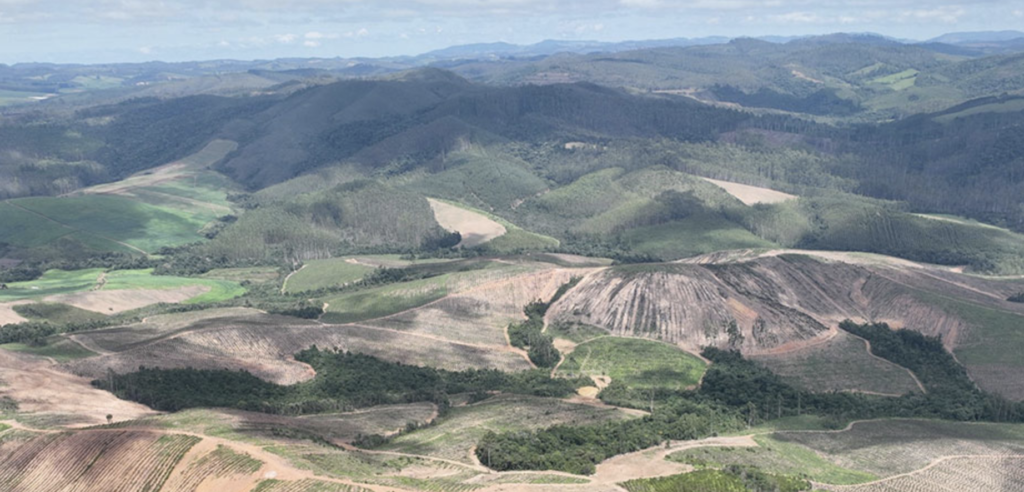Staff Writer | March 22, 2024 |

US President Joe Biden. (Image by Gage Skidmore, Flickr.)
The US Department of Energy (DOE) announced up to $475 million in funding for five projects in Arizona, Kentucky, Nevada, Pennsylvania, and West Virginia to accelerate clean energy deployment on current and former mine land.

In a media statement, the DOE said that this funding—made possible by the Bipartisan Infrastructure Law—will support a variety of locally-driven projects that range from solar, microgrids, and pumped storage hydropower to geothermal and battery energy storage systems and that can be replicated in other mining communities across the country.
“President Biden believes that the communities that have powered our nation for the past 100 years should power our nation for the next 100 years,” Jennifer M. Granholm, the US Secretary of Energy, said in a statement.
“Thanks to the President’s Investing in America agenda, DOE is helping deploy clean energy solutions on current and former mine land across the country—supporting jobs and economic development in the areas hit hardest by our evolving energy landscape.”
Three projects are on former Appalachian coal mines, thus supporting economic revitalization and workforce development on land that is no longer viable for industrial purposes. In the West, two projects seek to displace fossil-fuel use by ramping up net-zero mining operations and providing the critical materials needed for a domestic clean energy supply chain. These projects are also expected to create more than 3,000 construction and operations jobs.
From geothermal to PV
In Graham and Greenlee Counties, Arizona, a project led by Freeport seeks to deploy direct-use, geothermal, clean heat combined with a battery energy storage system at two active copper mines, helping decrease the mines’ reliance on onsite thermal backup generators while supporting the annual extraction of 25 million pounds of copper.
In Bell County, Kentucky, Rye Development proposes converting former coal mine land to a closed-loop, pumped-storage hydroelectric facility with the potential to dispatch up to eight hours of power when needed, such as during times of peak demand or extreme weather events. This project will support the increase of local tax revenues that have decreased steadily since the 1970s and create approximately 1,500 construction and 30 operations jobs.
In Elko, Humboldt and Eureka Counties, Nevada, a project led by Nevada Gold Mines aims to develop a solar photovoltaic facility and accompanying battery energy storage system across three active gold mines.
“By shifting to clean energy, this project could demonstrate a replicable way for the mining industry to reach net-zero operations, while meeting growing demands for minerals across multiple sectors—including the clean energy supply chain,” the DOE’s release states.
In Clearfield County, Pennsylvania, Mineral Basin Solar Power, a subsidiary of Swift Current Energy, plans to repurpose nearly 2,700 acres of former coal mining land to support the largest solar project in Pennsylvania. At 402 MW, Mineral Basin will generate enough clean energy to power more than 70,000 homes. This project is expected to increase regional access to clean energy and fill a critical electricity generation gap following the closure of the Homer City coal plant.
The initiative is also expected to provide $1.1 million in annual tax revenue to Goshen and Girard townships, Clearfield County and the Clearfield County School District.
In Nicholas County, West Virginia, a project led by Savion, a company that’s part of Shell, plans to repurpose two former coal mines with a utility-scale, 250 MW solar PV system that would power approximately 39,000 West Virginia homes. These two inactive mine sites provide land and access to existing energy infrastructure that will transmit the clean, solar energy the project generates to the grid.
“The Clean Energy Demonstration Program on Current and Former Mine Land will help provide the mining industry with a range of ways to decarbonize their operations and minimize environmental impacts and air pollutants, abating greenhouse gas emissions and disturbances to fragile, surrounding ecosystems,” the brief reads.
“Simultaneously, replicating clean energy technologies like these on other current and former mines will help maximize local workforce development and community opportunities for generations.”
US backs Australian, Brazil rare earths projects for up to $850 million
Reuters | March 21, 2024

Caldeira rare earth project in Brazil.
Image from Meteoric Resources.
The United States has backed two Australian-listed rare earths projects with up to $850 million of funding as Western nations build a supply chain for the strongly magnetic metals used in sectors from renewable energy to defence.

Australian Strategic Materials ASM.AX said on Thursday it has received a letter of interest (LoI) for a debt funding package of up to $600 million from the U.S. Export-Import Bank (EXIM) to support construction of its Dubbo rare earths project northwest of Sydney.
The bank has also offered up to $250 million in preliminary support for Australian-listed Meteoric Resources MEI.AX, which is developing its Caldeira rare earths project in Brazil, Meteoric said on Thursday.
Shares in ASM surged as much as 39% to A$1.65 before paring gains to $1.40 while Meteoric shares were up 1% at A$0.2425.
“When it comes to rare earths, there is a priority for critical minerals and the U.S. supply chain being developed domestically using feedstock and raw materials supply from allied nations,” said Dylan Kelly of fund manager Terra Capital.
“They are putting their money where their mouth is and effectively backing high-probability projects,” he added.
Backing by a government authority is seen as key to attract commercial lenders and private investment to the sector given a recent drop in prices and complex, often costly production requirements.
ASM is due to make a final investment decision by year-end on the Dubbo project that will produce light and heavy rare earths oxides. It already has A$200 million ($132.24 million) of initial support from the Australian government.
In December 2021, it said the plant would cost A$1.68 billion, but construction costs have since surged. It also operates a processing plant in South Korea.
Meteoric is targeting an investment decision late next year for Caldeira which will produce light rare earths neodymium, praseodymium (NdPr) and heavy rare earths dysprosium and terbium.
“The LoI represents a material step in ASM’s project funding strategy and is recognition of the strong engagement the Company has experienced from government, investors, and industry groups in North America,” ASM said in an exchange filing.
The U.S. has already offered support to Australia’s Lynas Rare Earths (ASX: LYC) for its processing facilities in Texas that are under construction.
The U.S. and Australia last year set up a critical minerals taskforce as Australia looks to drum up investment for minerals processing from allied nations as an alternative to top producer China, which accounts for more than 80% of global supply.
EXIM’s support for both projects is linked to the potential U.S. content in equipment, goods and services.
ASM last year agreed to sell neodymium iron boron alloy from its South Korean metals plant to U.S.-based rare-earth magnet maker Noveon Magnetics Inc from material sourced from Vietnam.
Australia last week said it would provide up to A$840 million ($550 million) for a combined rare earths mine and refinery in the country’s Northern Territory, owned by Arafura Rare Earths ARU.AX.
($1 = 1.5124 Australian dollars)
(Reporting by Ayushman Ojha and Melanie Burton in Melbourne; Editing by Josie Kao, David Gregorio and Jamie Freed)
The United States has backed two Australian-listed rare earths projects with up to $850 million of funding as Western nations build a supply chain for the strongly magnetic metals used in sectors from renewable energy to defence.

Australian Strategic Materials ASM.AX said on Thursday it has received a letter of interest (LoI) for a debt funding package of up to $600 million from the U.S. Export-Import Bank (EXIM) to support construction of its Dubbo rare earths project northwest of Sydney.
The bank has also offered up to $250 million in preliminary support for Australian-listed Meteoric Resources MEI.AX, which is developing its Caldeira rare earths project in Brazil, Meteoric said on Thursday.
Shares in ASM surged as much as 39% to A$1.65 before paring gains to $1.40 while Meteoric shares were up 1% at A$0.2425.
“When it comes to rare earths, there is a priority for critical minerals and the U.S. supply chain being developed domestically using feedstock and raw materials supply from allied nations,” said Dylan Kelly of fund manager Terra Capital.
“They are putting their money where their mouth is and effectively backing high-probability projects,” he added.
Backing by a government authority is seen as key to attract commercial lenders and private investment to the sector given a recent drop in prices and complex, often costly production requirements.
ASM is due to make a final investment decision by year-end on the Dubbo project that will produce light and heavy rare earths oxides. It already has A$200 million ($132.24 million) of initial support from the Australian government.
In December 2021, it said the plant would cost A$1.68 billion, but construction costs have since surged. It also operates a processing plant in South Korea.
Meteoric is targeting an investment decision late next year for Caldeira which will produce light rare earths neodymium, praseodymium (NdPr) and heavy rare earths dysprosium and terbium.
“The LoI represents a material step in ASM’s project funding strategy and is recognition of the strong engagement the Company has experienced from government, investors, and industry groups in North America,” ASM said in an exchange filing.
The U.S. has already offered support to Australia’s Lynas Rare Earths (ASX: LYC) for its processing facilities in Texas that are under construction.
The U.S. and Australia last year set up a critical minerals taskforce as Australia looks to drum up investment for minerals processing from allied nations as an alternative to top producer China, which accounts for more than 80% of global supply.
EXIM’s support for both projects is linked to the potential U.S. content in equipment, goods and services.
ASM last year agreed to sell neodymium iron boron alloy from its South Korean metals plant to U.S.-based rare-earth magnet maker Noveon Magnetics Inc from material sourced from Vietnam.
Australia last week said it would provide up to A$840 million ($550 million) for a combined rare earths mine and refinery in the country’s Northern Territory, owned by Arafura Rare Earths ARU.AX.
($1 = 1.5124 Australian dollars)
(Reporting by Ayushman Ojha and Melanie Burton in Melbourne; Editing by Josie Kao, David Gregorio and Jamie Freed)
No comments:
Post a Comment